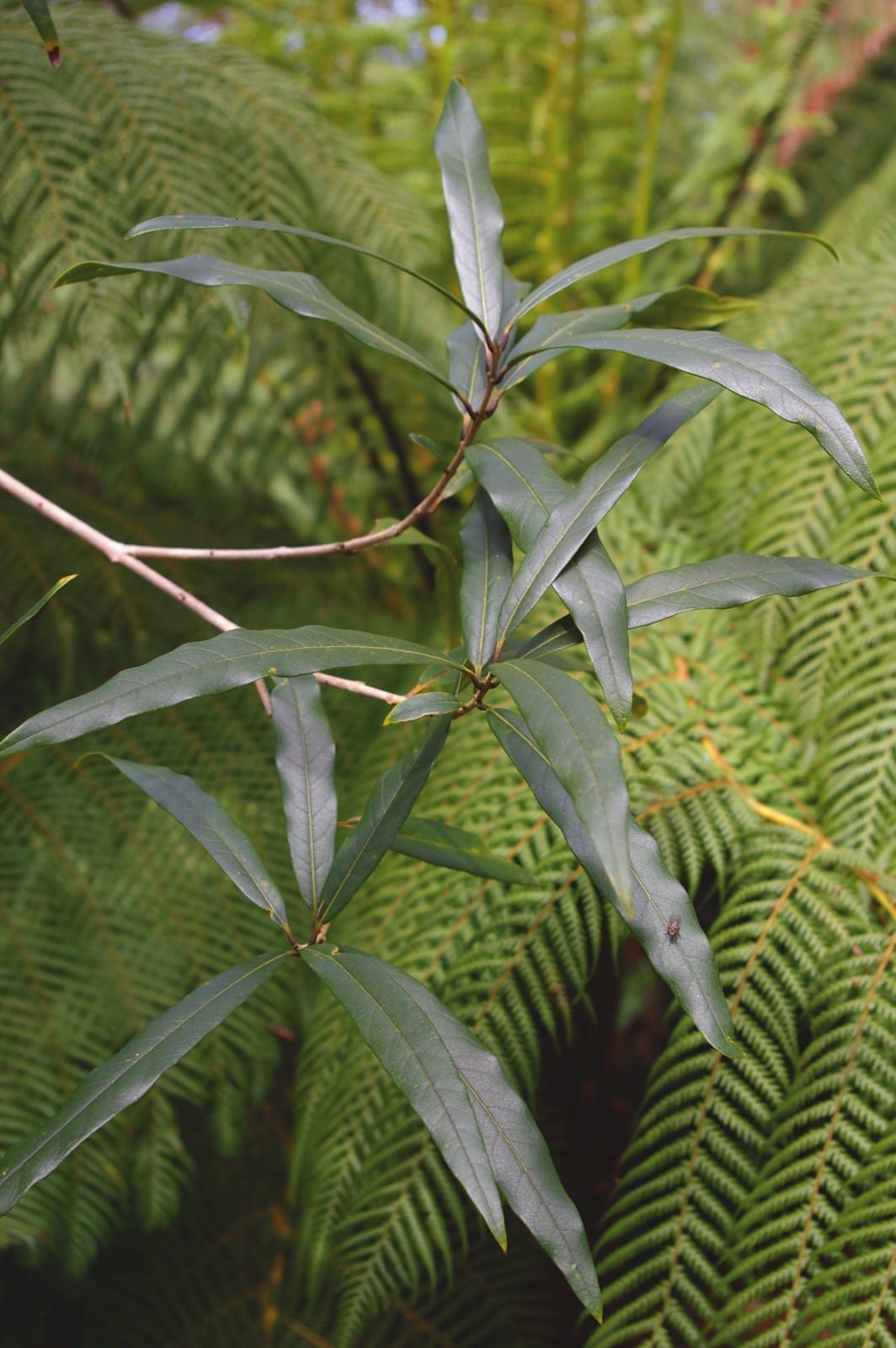Nestegis
Credits
Article from New Trees by John Grimshaw & Ross Bayton
Recommended citation
'Nestegis' from the website Trees and Shrubs Online (treesandshrubsonline.
Family
- Oleaceae
There are five species of Nestegis: four in New Zealand and one (N. sandwicensis (A. Gray) O. Deg., I. Deg. & L.A.S. Johnson) in Hawaii (Wallander & Albert 2000). They are evergreen trees and shrubs with leaves that are simple, opposite and entire. The leaves of juvenile plants are often of a different form to those of the adult. Inflorescences are axillary, decussate and racemose. The flowers are hermaphrodite or unisexual; the calyx small, four-lobed, cup-shaped; the corolla four-lobed or absent; stamens two to six. The fruit is a reddish drupe (Degener et al. 1958, Green 1963, 2004).
With the exception of the few specimens mentioned below, Nestegis is almost entirely unknown in gardens of the northern hemisphere and their literature. In New Zealand, however, the endemic species are appreciated for their dense evergreen canopies and their coloured fruits, which are eaten by birds. In addition to N. cunninghamii and N. lanceolata covered here, there are young plants of the narrow-leaved N. montana (Hook. f.) L.A.S. Johnson at Tregrehan. It and N. apetala (Vahl) L.A.S. Johnson are cultivated in New Zealand, and like the others, could be tried in mild coastal gardens in our area.

